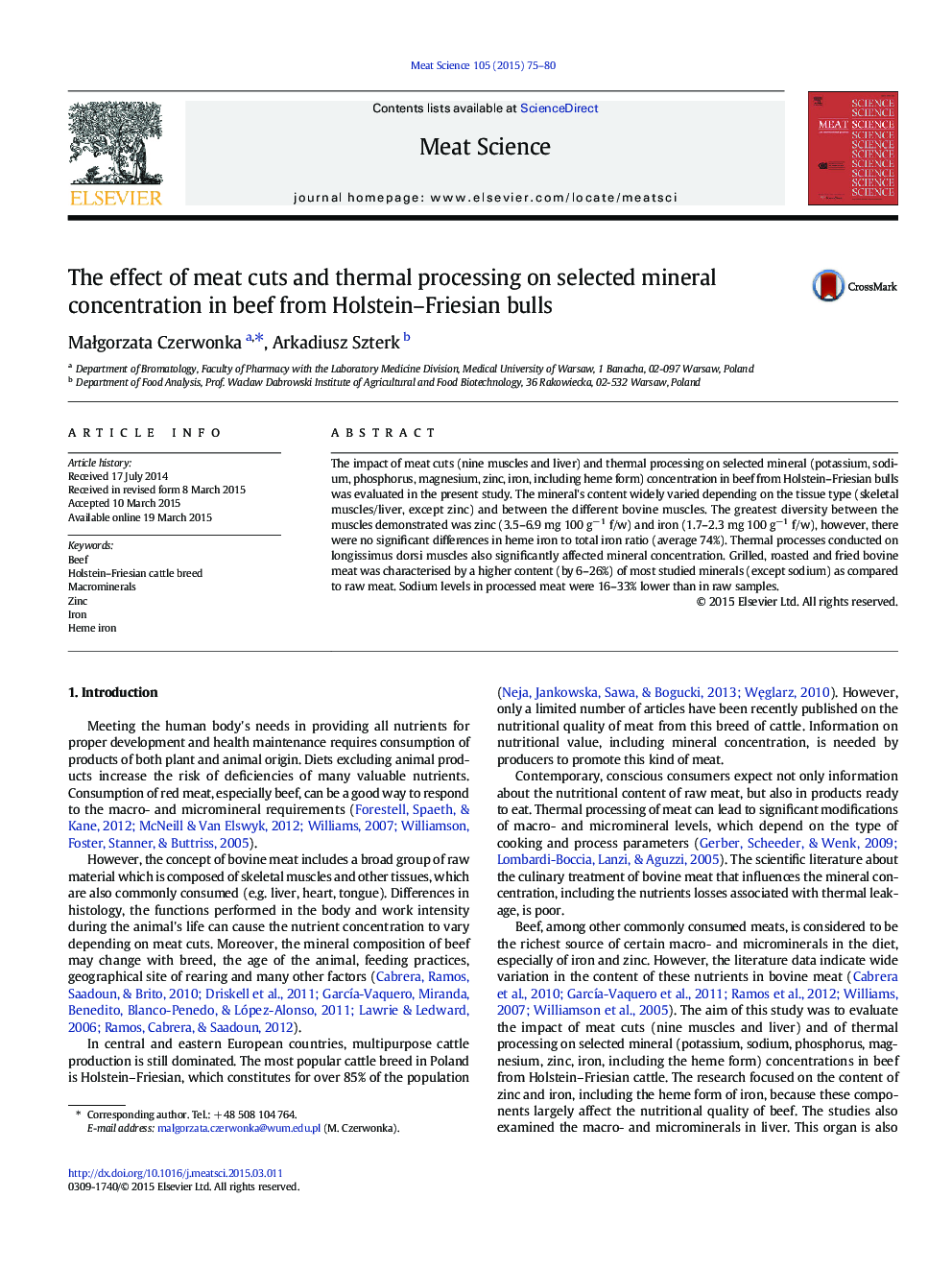| Article ID | Journal | Published Year | Pages | File Type |
|---|---|---|---|---|
| 2449682 | Meat Science | 2015 | 6 Pages |
•The mineral's content widely varied depending on the tissue type and muscles.•The greatest diversity between the muscles demonstrated for zinc and iron•No significant differences in heme iron/total iron ratio between muscles•Culinary processes conducted on beef significantly affect nutrient composition.
The impact of meat cuts (nine muscles and liver) and thermal processing on selected mineral (potassium, sodium, phosphorus, magnesium, zinc, iron, including heme form) concentration in beef from Holstein–Friesian bulls was evaluated in the present study. The mineral's content widely varied depending on the tissue type (skeletal muscles/liver, except zinc) and between the different bovine muscles. The greatest diversity between the muscles demonstrated was zinc (3.5–6.9 mg 100 g−1 f/w) and iron (1.7–2.3 mg 100 g−1 f/w), however, there were no significant differences in heme iron to total iron ratio (average 74%). Thermal processes conducted on longissimus dorsi muscles also significantly affected mineral concentration. Grilled, roasted and fried bovine meat was characterised by a higher content (by 6–26%) of most studied minerals (except sodium) as compared to raw meat. Sodium levels in processed meat were 16–33% lower than in raw samples.
